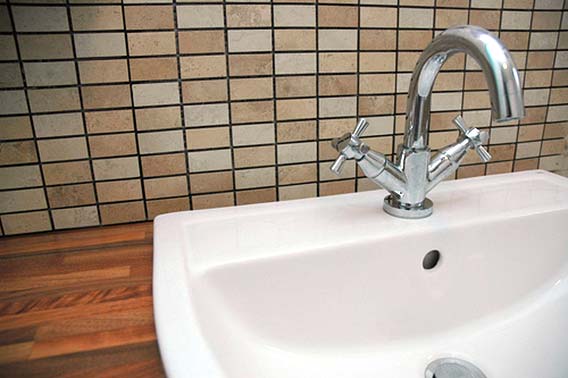Although you may not be able to check its pulse, when it comes to checking your home’s health there are some simple steps. This guide will help you to know whether your home is healthy or needs some doctoring. If you know what to look for, you can stay on top of home upkeep and be able to identify, catch, and repair small problems before they spiral into expensive ones.

Use a healthy home maintenance checklist and do a thorough walk-through of your home each spring and fall. Keep an eye (and nose) out throughout the year for problems that may crop up. Discover a few places around your home to start.
Be on the Lookout for Leaks
Plumbing leaks can lead to pricey repairs, but catching them early can prevent serious damage. Do a smell check near your bathroom and kitchen sinks for any musty odors. If you clean these areas and the smell still remains, your home may have a plumbing leak. This situation could result from a few culprits, such as sewer gas leaking through the drain.
Watermarks on the ceiling of rooms of your home and mold or mildew growth away from the shower could point to a problem with water where it shouldn’t be. If you identify a leak, have a plumber provide a professional diagnosis.
Check/Replace Your HVAC System’s Air Filters
This task takes five minutes or less and it’s an important task in checking your home’s health. It also relieves the strain on your HVAC unit and improves the quality of the air in your home. You can make this filter replacement a regular maintenance task. If you like, there are several benefits of a home warranty when it comes to servicing your HVAC system.
During the spring, you should replace the filter in your air conditioning system before the hot summer months arise. During the fall, you should change the air filter on your heating unit. If you’re operating these units in homes with much dust or pets in the home, you may need to replace the filters every four to eight weeks.
Keep Vents and Heating Registers Clean
Vacuum around your home’s vents and heating registers to remove any dust and debris if you notice poor airflow in your home. If you’ve just moved into a new home or are dealing with heavy quantities of pet hair and dander, you may want to consider getting your home’s ducts professionally cleaned.
Safeguard Against Carbon Monoxide
If it’s not present already, a carbon monoxide detector should be an essential item in your home. Odorless and deadly, carbon monoxide is otherwise impossible to detect. Keep your carbon monoxide detector plugged in near sleeping areas in your home. Detectors have backup batteries as well in case the power goes out, a feature that can protect your family regardless of power interruptions.
Your home environment impacts your own health, and taking care of your home is also an investment in your own self-care. Although you may have to place a service call to the pros if you find a serious issue, performing some DIY checks yourself and knowing the signs of potential issues can help keep your home healthy throughout the year.



